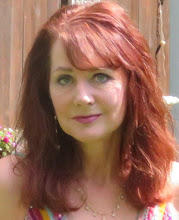http://www.amazon.com/dp/B006S3GPRK
When, over twenty years ago, I decided to write a book, I
chose a genre that fit my love of history and, inspired by the King Arthur
tales of Mary Stewart and Rosemary Sutcliffe, set it in dark age Wales. At first
I floundered, trying to find my story. But then in my research I came upon a
sixth century Welsh warlord named Maelgwn the Great and everything started to come
together.
There’s actually much more historical evidence for Maelgwn the
Great than there is King Arthur, and in northern Wales
I imagined Maelgwn as a fiercely independent man, as
raw and untamed as the land he ruled. In Roman British princess Aurora, I gave
him a heroine who could match his tempestuous nature and more than
hold her own. As their story unfolded, the themes of treachery and betrayal naturally
wove themselves into the plot, along with warfare, violence and a soul-consuming
passion. By the end, the world I had created seemed as real and alive to me as
any place I’d ever been. And when I finally visited Wales
Since Dragon, I’ve
written fifteen more books. But none of them stirs my blood the way this first
one did.
Some scenes from Maelgwn’s world:






